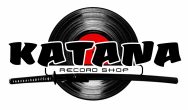Vinyl records have experienced a resurgence in popularity in the digital era, despite the dominance of digital music formats such as MP3s and streaming services. Several factors contribute to the enduring appeal of vinyl records:
1. **Analog Warmth:** Vinyl records are analog, providing a warm and rich sound that many audiophiles and music enthusiasts appreciate. Some argue that the analog nature of vinyl produces a more authentic and nuanced listening experience compared to digital formats.
2. **Tactile Experience:** Vinyl records offer a physical and tactile experience that digital formats cannot replicate. Fans of vinyl enjoy handling and interacting with the large album artwork, reading liner notes, and carefully placing the needle on the record.
3. **Collectibility:** Vinyl records are often seen as collectibles. Limited editions, special pressings, and unique colored vinyl can make a record collection more valuable and appealing to collectors.
4. **Nostalgia:** For many, vinyl records evoke a sense of nostalgia. They may remind people of a time when vinyl was the primary format for music consumption. Some individuals enjoy rediscovering or collecting music from different eras.
5. **Artistic Expression:** Musicians and artists often see vinyl as a medium for artistic expression. Album artwork is more prominent on a larger format, providing an additional canvas for creative expression.
6. **Sound Quality:** While digital formats offer convenience and portability, some argue that vinyl records provide superior sound quality, especially when played on high-quality turntables and audio systems.
7. **Limited Edition Releases:** Many artists and record labels release special or limited edition vinyl records to attract collectors and fans. These releases may include bonus tracks, unique packaging, or other exclusive features.
8. **Community and Events:** Vinyl enthusiasts often participate in a community of collectors and attend events such as record fairs, where they can buy, sell, and trade records. This sense of community contributes to the overall appeal of vinyl.
Despite the resurgence, vinyl records coexist with digital formats rather than replacing them. Many music lovers appreciate the convenience of digital music for on-the-go listening, while still valuing the tangible and immersive experience that vinyl provides for at-home listening. The coexistence of these formats allows consumers to enjoy the best of both worlds.
